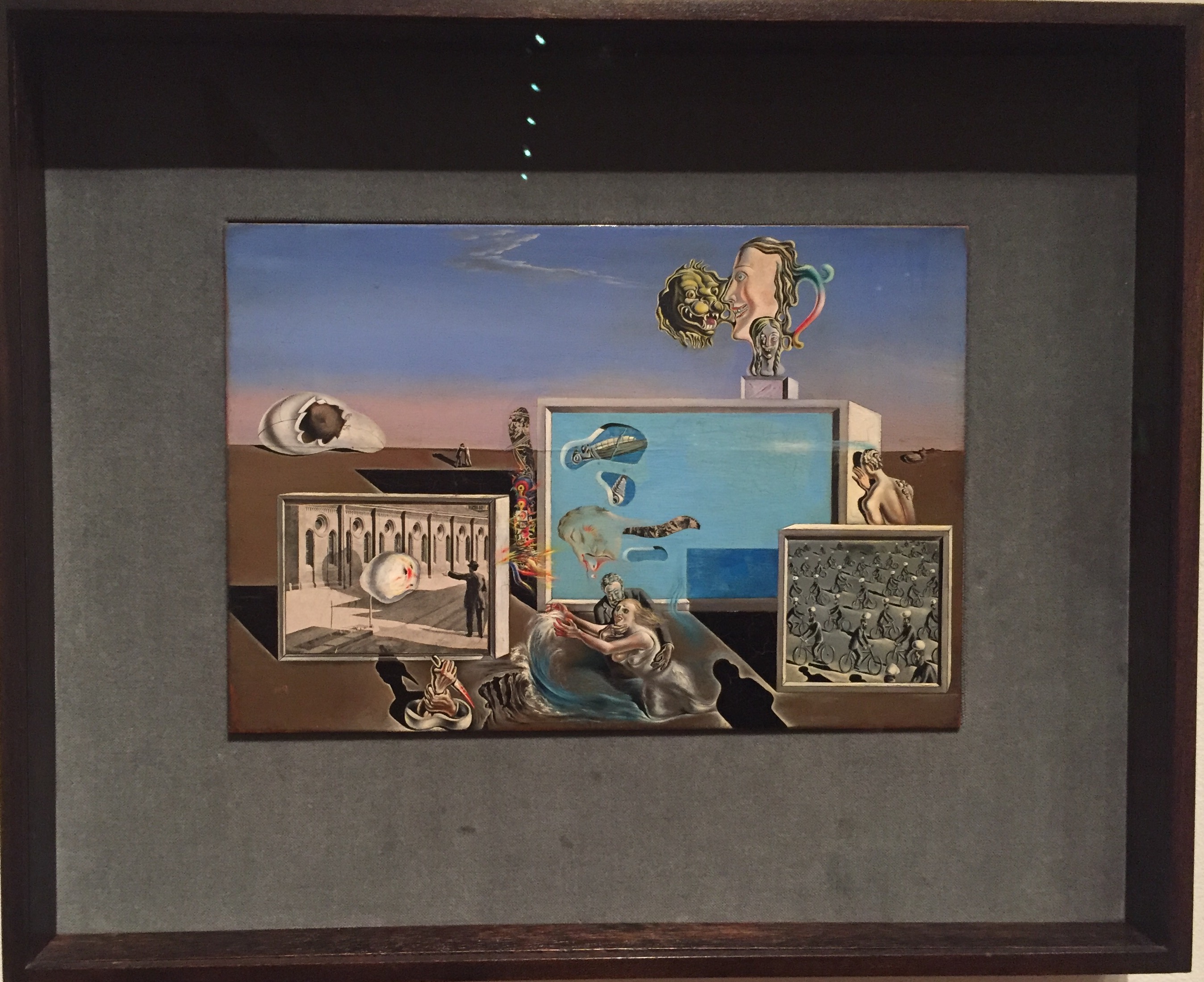Salvador Dalí
Illumined Pleasures
1929
Oil and collage on composition board
Often times while we are sleeping, different anxieties and emotions find their way in appearing into our dreams. Whether they are personal or universal thoughts, our dreams conjure up altered perceptions of our world views, creating scenes and storylines unheard of. How can we make sense of these worlds that we escape to in our deep slumber? Some may never be able to grasp meaning or reason from a dream, but others have become infatuated with how dreams develop and if we can find any connections to real life. In the early 1920’s, the Surrealist Movement allowed writers and artists to portray their own altered realities that appear at night. Among others, Salvador Dalí, was a renowned surrealist artist that shared his deepest insecurities and obsessions in his own dreams with the world.
In Illumined Pleasures, each object demands the viewers’ attention as one breaks down the image on view. The title could be referencing to the experience of being in a darkened room and allowing oneself to be immersed in a film from beginning to end. As the piece itself is encased in a box-shaped frame, it offers the illusion of being in a movie theater. The mixed media piece is fairly small in size, creating an intimate experience between the viewer and the piece in order to feel the full effect of each detail; similar to a movie, where you are encompassed by the screen.
Some of the objects remain non-representational as one may attempt to identify them. This was a common goal for the surrealists: to create dream-like scenes is to distort representational objects as well as incorporating non-existent ones. On the top right, there seems to be an egg-like object hatching with a head breaking through. Peeking out of the middle box on the left side, appears to be birds and other fragmentations of wings and feathers. In the first box, a man is pointing at a white circular object with a shocked face surrounded by identical architecture. Above the middle box, there is a profile of a smiling woman shaped as a tea pot as a tiger head blends into her face. Underneath, stand a statue of a different abstracted face.
The middle box seems to have great relations to The Great Masturbator, symbolizing fears of insects and personal anxieties and obsessions. Because these anxieties and obsessions were a recurring event in his life and in his own dreams, he continued to incorporate them in future paintings. The grasshopper and the distorted head became a unique component of Dali’s one of a kind world as his distinct style continued to flourish in the art world. In the last box, another repetitive pattern appears, multiple men are on bicycles, traveling in aimless directions with thought bubbles above their heads. The figures and other objects surrounding the three boxes add drama to the small encased scenes around the landscape that Dalí has created for us.
The trifling events scattered outside of the boxes include: a man attacking a woman, disembodied hands holding a knife, and two people huddled close. With the dramatic shadowing of the figures, a viewer can feel the energy of maddening hallucinations of one’s imagination, particularly Dalí’s. Is the man grabbing the woman seeking pleasure? And the man peeking into the hole of the middle panel? It is as if the figures are trying to escape to a different reality as if Dalí has created a nightmare for them. Dali’s work will always leave viewers questioning his absurd storylines as we continue wanting more of the intricate world that he creates.
